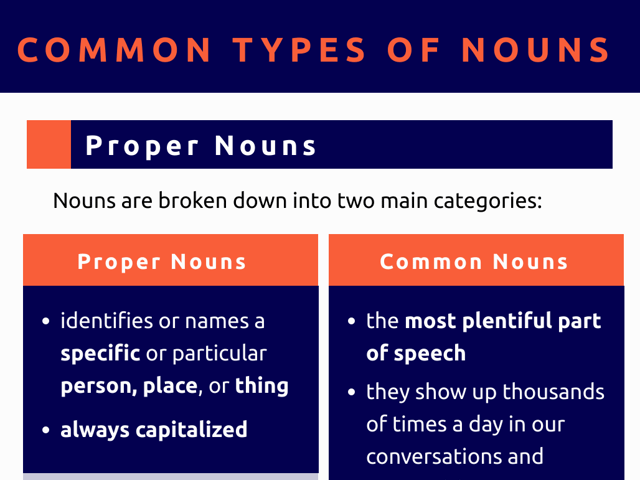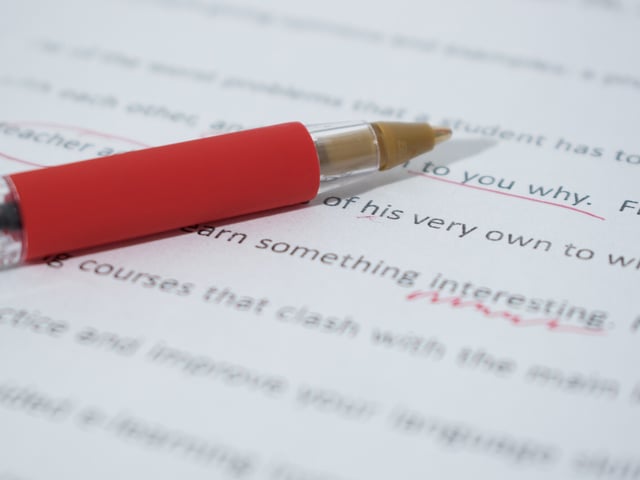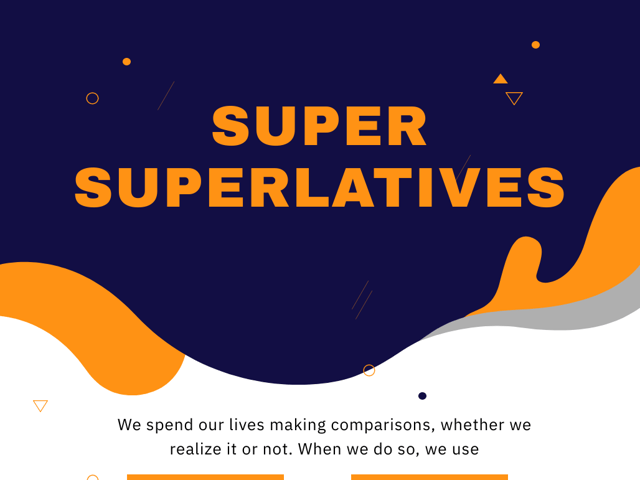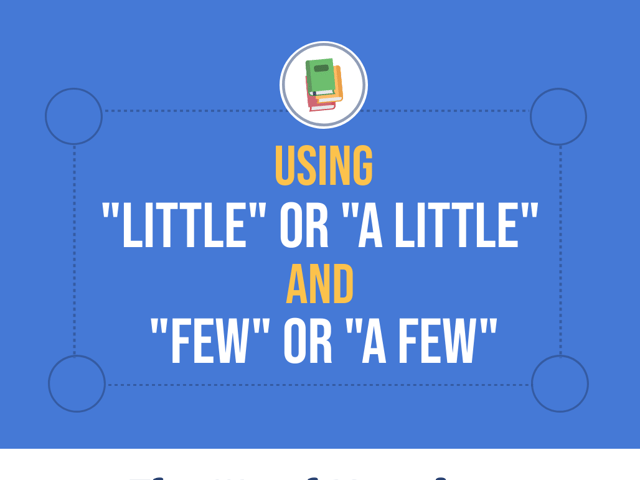
Common Types of Nouns
Ah, the wonderful world of nouns. They are probably the most commonly used part of speech and there are several different types of which to be aware and know how to use. As a reminder:
A noun is a part of speech that names a person, place, thing, or idea.
The following is a quick guide to nouns.
Proper Nouns
Nouns are broken down into two main categories: proper and common.
A proper noun is a noun that identifies or names a specific or particular person, place, or thing. Proper nouns are always capitalized. Here are some examples of proper nouns:
Dr. John Carter
The Grand Canyon
Michigan State University
Grandma Rae
Scotland
Italian
Mt. Everest
Common Nouns
Common nouns are the most plentiful part of speech. They show up thousands of times a day in our conversations and compositions. Common nouns name people, places, things, or ideas. Generic enough to not require a capital letter, common nouns are abundant in writing! Here is a brief list:
sock
enthusiasm
dog
hunger
love
sugar
uncle
president
soccer
Making Singular Nouns Plural
Nouns can be plural (more than one) or singular (only one). Most of the time, to make a singular noun plural, you just add an s. Here are some examples of common nouns being made plural. Note, making a noun plural generally only works with common nouns. If it’s a proper noun, it’s usually one-of-a-kind and can’t be made plural.
| Singular | Plural |
|---|---|
| boy | boys |
| board | boards |
| key | keys |
| building | buildings |
| cat | cats |
| dentist | dentists |
| spur | spurs |
| worm | worms |
Exceptions to the Plural Noun Rule
You know that the above is not the rule for all nouns. This is the English language, after all, and there are always exceptions. Here are the most common:
Nouns that end in “-ch”, “-sh”, “-s”, “-x”, or “-z” add an es to the end of the word to make them plural. With just an “s” they’d be difficult to pronounce. Sometimes you also have to add another consonant (see the word quizzes).
| Singular | Plural |
|---|---|
| bunch | bunches |
| leash | leashes |
| kiss | kisses |
| mix | mixes |
| quiz | quizzes |
Nouns that end in “y” preceded by a consonant change to i and then add es when made plural.
| Singular | Plural |
|---|---|
| city | cities |
| baby | babies |
| lady | ladies |
| family | families |
Nouns with “f” or “fe” endings in the singular form change to ves endings when made plural.
| Singular | Plural |
|---|---|
| life | lives |
| calf | calves |
| leaf | leaves |
| self | selves |
And then some exceptions don’t really have a hard and fast rule—they’re just exceptions you have to memorize:
| Singular | Plural |
|---|---|
| child | children |
| man | men |
| woman | women |
| foot | feet |
Countable and Uncountable Nouns
Since we’re on the topic of plural nouns, let’s distinguish between countable and uncountable plural nouns.
Countable nouns can be counted (even if it would take a really long time to do so) and are used with articles and adjectives like a, an, the, some, any, many, and few, and can be made plural.
There are a few pieces of leftover pizza.
We saw some Dodgers fans.
I’d like a glass of water.
Do you know where the restroom is?
Uncountable nouns, those that cannot be counted individually, are considered singular nouns and will not end in -s or be introduced with an article or adjective like a countable noun.
Mary didn’t get enough sleep.
Sam gave good advice.
We are supposed to get rain today.
The sand on the beach was wet.
Concrete and Abstract Nouns
Among common nouns, further distinction can be made between concrete and abstract nouns. A concrete noun is something that can be physically held or seen. It is real and can be pointed to. For example:
sidewalk
sun
bowl
hole
brother
apple
An abstract noun is an idea or state that cannot be held or seen and is not concrete or physical. For example:
love
peace
beauty
hatred
courage
Because there are literally hundreds of thousands of nouns in the English language, we can’t cover them all here. But knowing that different types of nouns exist, that they are paired with verbs in different ways depending on if they are considered singular or plural (so that you have subject-verb agreement in your sentences), and that they have different features will help you identify and use them correctly in your writing and speaking.
Keep Reading

English Basics Blog
How to Write a Compare and Contrast Essay
When you were in school, you probably had to write a lot of different t…

English Basics Blog
What are Superlatives?
We spend our lives making comparisons, whether we realize it or not. Wh…

English Basics Blog
When to Use “Little” or “a Little” and “Few” or “a Few”
Few aspects of the English language can grow as convoluted as when to u…